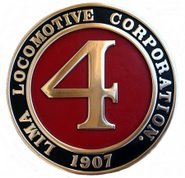This history was prepared by Robert Niles for the Eldorado National Forest in 1979. The El Dorado Western Railway blog will reprint serialized portions of Mr. Nile’s report in the coming months.
The Dolbeer steam donkey was developed in 1882 by John Dolbeer of Eureka, California. With this development the chore of handling logs became considerably easier.
The Dolbeer donkey was a simple devise utilizing a small, upright steam engine to power a single drum winch. The devise was first used for unloading logs at the mill, but was soon it was put to use pulling logs to the landings in the woods and unloading logs by cross haul cables and "gin" poles on to the log cars. More powerful engines were developed later to operate double drum winches for increased pulling power.
The versatile Dolbeer donkey was also utilized by attaching it to the pilot of a locomotive. This combination of log handling machinery and locomotive was dubbed a "gypsy." There is no evidence that such a devise was ever used by the Caldor operation, but extensive use was made of the skid mounted Dolbeer donkey in the woods and at the saw mill.
These steam winches began the phase out of the dependence on horses and mules for log skidding and loading after 1900.
With the arrival of the steel rail and steam locomotives at Caldor in 1904, the transition to a railroad logging operation began. The timber stands owned by the California Door Company were of excellent quality and could average up to 35,000 board feet per acre on the well-stocked sites.
The new mill could produce up to 60,000 board feet of timber per day so the stage was set for a more efficient harvest of the timber stands by utilizing the new geared locomotives that were now being used in the Sierra Nevada and were to drastically change production and logging methods in the timer industry.
I'll post the next installment in two weeks ...
Subscribe to:
Post Comments (Atom)


No comments:
Post a Comment